The 25 Best ‘Star Wars’ Games Ever Made
From 16-bit Death Star runs to VR duels with Vader, these are the best ways play in a galaxy far, far away
Across pop culture, few franchises lend themselves to video games as well as Star Wars. It’s got it all: galaxy-wide conflicts between clones and robots, Top Gun-style aerial combat among the stars, bounty hunters, smugglers, and mercenaries all armed to teeth just looking for trouble. And then there’s some superpowered space wizards with laser swords or something.
Rife with potential, there’s been no shortage of Star Wars games. The franchise was born right at the time when video games were finding their footing amid the arcades’ heyday and the dawn of the home console.
Since the first game, 1982’s Star Wars: The Empire Strikes Back for the Atari 2600, the franchise has been a constant source of inspiration for developers. From platformers to flight sims, RPGs and real-time strategy, and way too many digital pinball games, Star Wars has seen and been it all. But it’s had its ups and downs.
Having been with gaming through all its growing pains, Star Wars is among the most adapted franchises in the industry’s history, and itself is a staple for players in the way series like Pac-Man and Mario are. But not all Star Wars games are equal; some aren’t worth mentioning at all. Yet at its best, Star Wars empowers players to live out all their greatest fantasies of power, intrigue, and most of all, wonder.
With Ubisoft’s Star Wars Outlaws releasing this week, we’re looking back at the games that brought the feeling of George Lucas’ world to life in the palm of players’ hands. From early pixelated retellings of the original movie to game’s so immersive you can feel a bantha’s breath, here are the greatest Star Wars games of all time.
-
‘Star Wars: Hunters’
Image Credit: Zynga Developed by Farmville creator Zynga, 2024’s Star Wars: Hunters is a free-to-play competitive hero shooter that’s easy to pick up and a breezy way to get a family-friendly shooter fix. Ostensibly a simplified Overwatch clone with a Star Wars coat of a paint, it deviates from the more complex multiplayer experiences that the franchise has become known for, while remaining a solidly addictive competitive 4v4 squad arena game. Great for kids cutting their teeth in online gaming, it’s a no-frills, streamlined character mash-up that proves there’s fun to be had across all genres in Star Wars gaming, even when it’s low-hanging fruit.
-
‘Star Wars: Bounty Hunter’
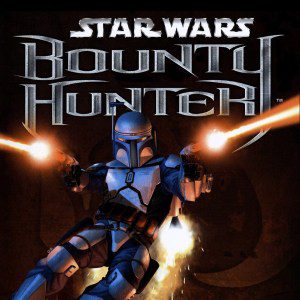
Image Credit: LucasArts While a generation of players longed for a game starring Episode V‘s badass Boba Fett, Star Wars: Bounty Hunter offers the next best thing with an action-adventure based on his dad, Jango. A prequel to Episode II – Attack of the Clones, it depicts the backstory of the former Mandalorian warrior on a mission to hunt down a Dark Jedi that spirals into a larger conspiracy. As part of the expanded universe, the story is now non-canon, but as a bounty hunter power fantasy, the game works fine (albeit with some jankiness to the dated controls). But with a jet pack, flamethrower, and blaster ready, what more do you need?
-
‘Star Wars: Episode I – The Phantom Menace’
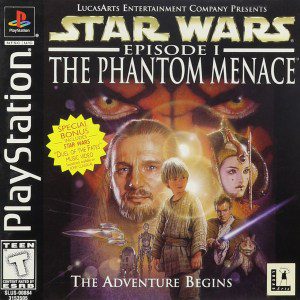
Much like the film that inspired it, 1999’s Star Wars: Episode I – The Phantom Menace video game adaptation can be a slog. A near 1:1 recreation of the movie’s plot, the game plays out like a choppy, blocky action platformer take on the disappointing prequel. But by giving players control of the characters — including Obi-Wan, Qui-Gon Jinn, Queen Amidala, and Captain Panaka — it at least delivers a greater sense of agency than expected from a story about trade embargoes. Overall, it’s a standard PlayStation 1 era action game elevated by its cheesiness and woefully funny voice acting.
-
‘Star Wars: Shadows of the Empire’

Image Credit: LucasArts One of the first Star Wars games to break away from a simple retelling of the original trilogy, Shadows of the Empire stood apart as a piece of a larger multimedia project to fill in the narrative gap between The Empire Strikes Back and Return of the Jedi. As mercenary Dash Rendar, players are able to blast their way through the game’s plot alongside franchise staples Luke Skywalker, Lando Calrissian, and Chewbacca in a swashbuckling adventure that colors in the margins of the OT and recontextualizes the aftermath of pivotal moments like the Battle of Hoth. During the heyday of now non-canon Expanded Universe, fans were hungry for new characters like Dash in ways many now reject in the modern era – unless your name is Din Djarin.
-
‘Star Wars: Rebellion’

Image Credit: LucasArts Breaking the mold of all-out action, 1998’s Rebellion opted for a more methodical approach to Star Wars gaming. As a real-time strategy game, players take on the role of an officer in either the Rebel Alliance or the Empire to manage the large-scale conquest of different systems throughout the galaxy. Of course, that comes with the all the thankless work of maintenance, diplomacy, and resource building that often gets left aside in the wake of lightsaber dueling and X-Wing aerial theatrics. It isn’t perfect by any means, but it helped set the pace for later games in the genre by improving on the more cerebral aspect of Star Wars simulation.
-
‘Star Wars’
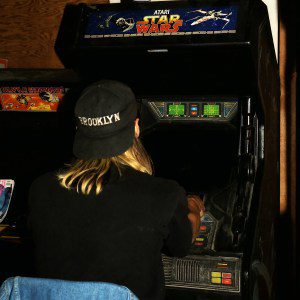
Image Credit: Lindsay Brice/Getty Images Despite its vintage, 1983’s arcade classic wasn’t the first Star Wars game, coming a year after the Parker Brothers’ Star Wars: The Empire Strikes Back (1982) for the Atari 2600. But it was the first good one and stands as the progenitor for what video games based on the franchise could be. Like many popular coin-op cabinets of the time it’s an on-the-rails shooter, based on the Death Star trench run of the original 1977 film. With its vibrantly colorful vector graphics that recreate wireframe facsimiles of X-Wings and TIE Fighters, Star Wars’ arcade introduction showed fans of Lucas’ space fantasy a neon vision of its future through gaming.
-
‘Star Wars: Squadrons’
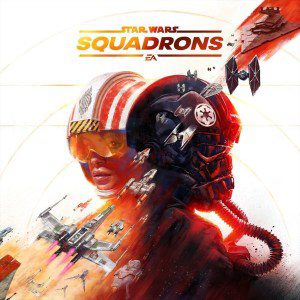
Image Credit: Electronic Arts If 1983’s Star Wars introduced what high octane dogfighting in space could look like, 2020’s Star Wars: Squadrons shows how far it’s come. Set after the events of Return of the Jedi, the game’s singe-player narrative bounces between perspectives on both sides of the battle, taking on split roles between the New Republic and the remnants of the Galactic Empire. But it’s the game’s multiplayer mode where it truly shines, as a full-on starfighter sim played across all axes from within the cockpit. The most cutting edge take on Star Wars space combat to date, its level of immersion is unmatched, especially with the game fully playable in VR.
-
‘Star Wars Racer Revenge’
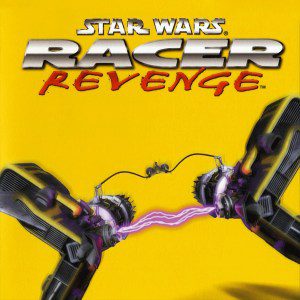
Image Credit: LucasArts The follow-up to 1999’s Episode I: Racer, 2002’s Racer Revenge brought the original’s white knuckle hover speeding to the PlayStation 2. Yet, despite having substantially more advanced hardware and a stellar foundation to build off, the sequel does little to advance beyond its predecessor, although remains of the most unique entries in the pantheon of Star Wars games. With a heavy focus on vehicle-to-vehicle combat over expert-level handling and mechanics, the game feels at least partially inspired by the likes of Twisted Metal or Crash Team Racing over the pristine balance of the original.
-
‘Star Wars: The Force Unleashed’

Image Credit: LucasArts Another product of the now-defunct Expanded Universe, The Force Unleashed was released in a post-God of War era where more mature tones and brutal action reigned supreme, and it shows. The game centers around the secret apprentice of Darth Vader, Galen Marek — referred to a Starkiller — who serves as the Sith lord’s right hand in a quest to eliminate surviving Jedi before inadvertently getting tangled up in a conspiracy to overthrow the Emperor himself. The story may be a mess, but the crunchy combat and litany of Force abilities in players’ hands make for one of the strongest power fantasies in the series. Its sequel, 2010’s The Force Unleashed II ratcheted everything up to 11 in the worst possible way before the sub-franchise was put to bed for good.
-
‘Star Wars Jedi Starfighter’

Image Credit: LucasArts While there’s several great starship-based games in the franchise, few have focused solely on the unique ways in which the Jedi themselves engaged in aerial and space warfare. While its predecessor, Star Wars: Starfighter, let players take control of any number of ships from the prequel era, Jedi Starfighter gave them the reins to Force-powered ships not generally seen in vehicle-based Star Wars action games. The addition of Force abilities to the starfighter formula bridges the gap between traditional Jedi-based gameplay and the bliss of zero gravity dogfighting that still remains rare to see across other games of its ilk throughout the years.
-
‘Star Wars: Episode I: Jedi Power Battles’
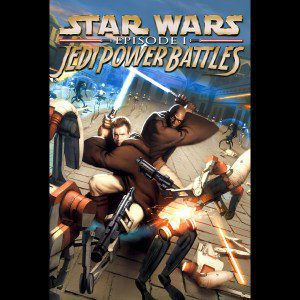
Image Credit: LucasArts For all the types of video games made from the Star Wars license, there’s been surprisingly few that scratch the specific itch of a good old-fashioned beat ‘em up. It’s really a shame because 2000’s Jedi Power Battles showed the potential of sticking to the fundamentals of kickass arcade-style combat. Once again following the plot of Episode I, the game skips through the boring parts (the story) and cuts to the chase with a cooperative blitz through multiple levels in the vein of brawler cult classics like 1997’s Fighting Force. A perfect overnight binge with buddies, gaming has yet to see anything like Jedi Power Battles from the franchise since.
-
‘Vader Immortal’

Image Credit: Disney Interactive Studios As one of the flagship titles to usher in the modern era of virtual reality, the Vader Immortal series had a lot to live up to. Literally putting a lightsaber in players’ hands should be a no-brainer; enough non-licensed games do that enough already. But there was always a chance to whiff it with a shallow carnival ride on an expensive headset. Thankfully, the Vader Immortal series stuck the landing, with three episodes released throughout 2019 that made the novelty of VR worth it, even just for a bit. There’s nothing quite as harrowing as its climactic moments, staring down Darth Vader himself across the uncanny valley as the hair stands up on your neck in anticipation of the full body workout of the duel to come.
-
‘Star Wars Jedi: Fallen Order’

Image Credit: Electronic Arts There was a period after Disney’s acquisition of Lucasfilm in 2012 where Star Wars games really just sucked. With a multiplayer-heavy reboots of the Battlefront series releasing in 2015 and 2017 to a critical and fan mauling, there seemed to be little hope for the return of strong single-player narrative games in the franchise. In 2019, Fallen Order changed that. The game introduced a new Padawan, Cal Kestis, who’s on the run following the execution of Order 66 that eliminated most of the Jedi. With puzzle-like pseudo open-world environments and complex “Soulslike” gameplay, Fallen Order helped usher in a brighter future for quality Star Wars games at a time when many were worried that the best years were behind them.
-
‘Star Wars: Episode I: Racer’

Image Credit: Nintendo; LucasArts Among the litany of issues with Lucas’ initial outing into the Star Wars prequels, there’s one aspect most fans can agree on: podracers rock. The breakneck speed and deadly cat-and-mouse mind games of a Star Wars version of Formula One perfectly translate to gaming in 1999’s Episode I: Racer. A standout on the Nintendo 64, it’s remembered fondly by players of the era as one of the most exhilarating games there is, standing alongside Nintendo’s own sci-fi F-Zero as one of the console’s best racers. With deep customization options and a slew of different vehicles and jockeys to choose from, it offers a surprisingly complex system to create the perfect speed machine to beat its toughest courses.
-
‘Star Wars: Empire at War’
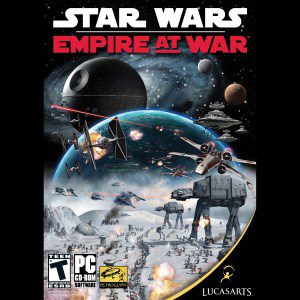
Image Credit: LucasArts Following in the footsteps of previous real-time strategy games like Rebellion, Empire at War allows players to engage in large-scale combat on both planetary surfaces and in space. With multiple modes, including a main campaign and a more sandbox-like Galactic Conquest, fans can stage epic battles between three factions including the Rebel Alliance, the Empire, and rogue pirates — although only the first two are playable. With a brand-new engine making the game more visually and mechanically complex than its predecessor, Empire at War delivers the kind of peak strategy gameplay Star Wars deserves, and has inspired a dedicated modding community that’s still actively playing their own versions of the game today.
-
‘Star Wars: TIE Fighter’
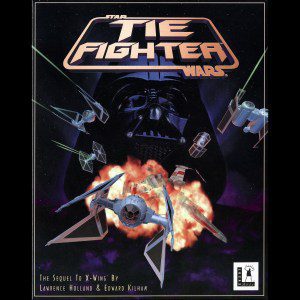
Image Credit: LucasArts One of the first Star Wars flight simulators to fully nail the in-cockpit perspective, 1993’s Star Wars: X-Wing was revolutionary for its time. Its sequel, 1994’s TIE Fighter, took it to the next level, as fans got to play as an Imperial pilot tasked with crushing Rebel forces, pirates, and even turncoats from the Empire. Each mission offers a wealth of primary and secondary objectives to complete. Building on the foundation of X-Wing, TIE Fighter introduces the ability to target individual components of large ships and stations in addition to more advanced 3D targeting displays. While later title like Squadrons have modernized this type of game, TIE Fighter set the standard for its time.
-
‘Lego Star Wars: The Skywalker Saga’
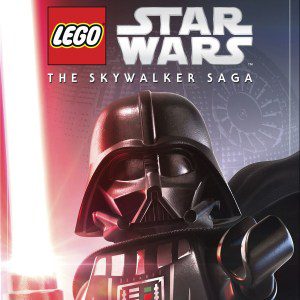
Image Credit: Warner Brothers Games No Star Wars games list is complete without a Lego entry. Since 2005, the Lego-fication of Star Wars has made for its own ongoing saga as the family-friendly send-up of the franchise continues to see updates based on both the individual trilogies and original stories. 2022’s The Skywalker Saga is seemingly the end-all, be-all of the series, with a sprawling narrative the retells the story of all nine main episodes, through The Rise of Skywalker. As silly, satirical takes on the plot of the films, the Lego Star Wars games make for great entry points for younger fans who want to engage in the space fantasy epic with a little more slapstick comedy. A love letter to Lucas’ creation, Lego Star Wars is packed with references and easter eggs and makes for a laid-back multiplayer experience that’s perfect for couch co-op.
-
‘Star Wars: Knights of the Old Republic II: The Sith Lords’
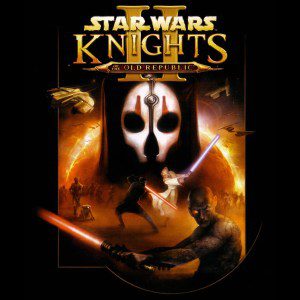
Image Credit: LucasArts Like real-time strategy and beat ‘em ups, RPGs are another genre that have seen surprisingly little of Star Wars’ love over the years. From Obsidian (of Fallout: New Vegas fame), Knights of the Old Republic II shows how much potential there is for choice-driven gameplay in a galaxy far, far away. Like its predecessor, the game is set thousands of years before the prequel trilogy at a time when the Jedi are at their strongest, having nearly eradicated the Sith. With the ability to create a custom character to build out, and a heavy emphasis on freedom to play out combat and dialogue interactions in a variety of ways, it’s beloved by many for its morally gray take on Star Wars. Unfortunately, the game does little to evolve beyond the first game, playing near identically, and ultimately launched feeling somewhat unfinished in comparison.
-
‘Super Star Wars’

Image Credit: JVC Musical Industries Tucked away amid all the 3D action epics and starfighter sims in Star Wars’ gaming history is a trio of brutally difficult side-scrolling platformers that are quintessentially Nineties. The first, 1992’s Super Star Wars, is one of the best movie-to-game tie-ins of an age where the adaptations were at their best. (Remember Disney’s Super Nintendo classics like 1993’s Aladdin and 1994’s The Lion King?) Following the plot of the original film portrayed in 16-bit pixelated bliss, players control a core cast of Luke, Han, and Chewy in sequences from the movie reworked to focus on shooting and jumping. Later stages, like the notorious landspeeder level and the Death Star trench-run, infuse faux-3D visuals and parallax effects that the SNES hardware made famous. None of the games in the Super Star Wars trilogy are easy, but if you’re up for a grueling challenge, they’re a exceptional retro experiences that hold up until this day.
-
‘Star Wars: Battlefront II’
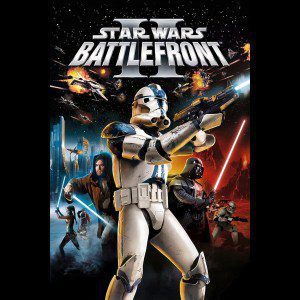
Image Credit: LucasArts Not to be confused with 2017’s Battlefront II, a game that looked great but mostly disappointed fans, the true Star Wars Battlefront II was released in 2005 and is widely considered one of best — if not the best — multiplayer experiences in the Star Wars universe. A third-person shooter released shorty after Halo exploded online gaming for console players, Battlefront II offered large-scale ground warfare with modes like conquest and capture the flag in addition to ship-to-ship bouts in space. For those playing solo, the game has a more robust story mode than the original, making it a complete package whose nostalgic hooks in gamers did no favors to the reboot a decade later.
-
‘Star Wars Jedi: Survivor’
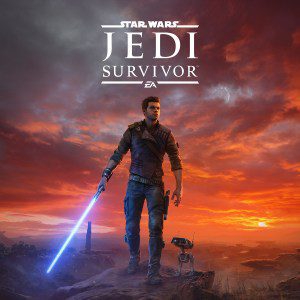
Image Credit: Electronic Arts 2019’s Fallen Order was a great game, but many at the time felt that it was mostly a great foundation for an even better sequel. That’s exactly what 2023’s Survivor ended up being. Taking the Soulslike gameplay of the first game and streamlining its combat with more fluid movement and less emphasis on slow, defensive measures, the sequel improved the moment-to-moment action and doled out powerful abilities at a more rapid pace. With improved visuals and a steadier build, Survivor continued the upward trend of Star Wars games in the 2020s and portrayed a thrilling, cinematic story that rivals what’s being produced theatrically or on Disney+, all the while delivering a tightly designed, challenging action game that makes for a more approachable take on games like Dark Souls.
-
‘Star Wars Outlaws’

Image Credit: Ubisoft While many games manage to replicate the iconography of Star Wars — the ships, lightsabers, and droids — few manage to fully immerse players in its vibe. What if, instead of just racing through Star Wars-coded environments, you could spend time soaking it in? That’s the promise of Outlaws, the most recent game in the Star Wars lineage. Setting aside the Jedi and rebels, it focuses instead on a small-time thief named Kay Vess, and the cascading mess she creates as she makes her mark on the criminal underworld. The first truly open-world Star Wars game, Outlaws lets players pick up gigs and primary quests across numerous planets and figure out on their own the best way to play in the sandbox. The gameplay is on the simpler side of action, but by focusing on the lesser seen sides of Star Wars with a whimsically adventurous tone, it embodies the spirit of the original films better than most games ever have.
-
‘Star Wars Jedi Knight II: Jedi Outcast’
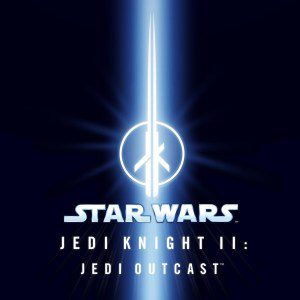
Why force players to choose between a first-person shooter and a third-person lightsaber game when you can have both? That’s the promise of Jedi Outcast. The third entry in the Jedi Knight series after the Wolfenstein-inspired Dark Forces duology, the game stars Kyle Katarn, an ex-Jedi turned mercenary whose proficiency with all forms of weaponry, which means blasters and blades alike at his disposal. The balance between FPS gunplay and lightsaber dueling makes Outcast feel like a blend of the best Star Wars games; the ability to swap perspectives at the touch of a button, and the option to choose both Light and Dark side powers, expands on Kyle’s repertoire from the previous games to mold the ultimate Force-powered bad ass.
-
‘Star Wars: Rogue Squadron II: Rogue Leader’
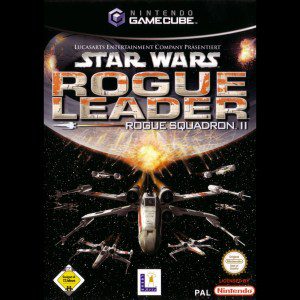
Image Credit: LucasArts Among an armada of ace starfighter games, only one is supreme: Star Wars Rogue Squadron II: Rogue Leader. Developed as a launch title for Nintendo’s GameCube in 2001, Rogue Leader astonished players with a massive technological leap forward. Frankly, it was all downhill from there. No future release on the GameCube packed the same awe factor as the game’s opening level, which kickstarted the experience with a furiously chaotic take on the classic Death Star trench run. With razor-sharp controls and high-pressure dogfighting scenarios, Rogue Leader felt like Nintendo’s true successor to its own space sim Starfox, but better. And looking back now, it could genuinely go toe-to-toe with any modern flight combat game today — Star Wars or otherwise.
-
‘Star Wars: Knights of the Old Republic’
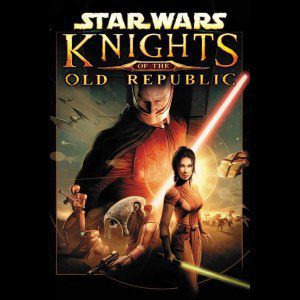
Image Credit: LucasArts Of everything that makes Star Wars great, its deepest strength may be its sense of scope. At its core, it’s about big things coming from small places. It all begins with happenstance, a turn of fate, before snowballing into grandiosity. Bioware’s 2003 RPG Knights of the Old Republic takes that concept and runs with it. Built off the bones of Wizards of the Coasts’ d20 game system (a.k.a. a Dungeons & Dragons ruleset), KOTOR presents players with world of possibilities. Set 4,000 years before the Star Wars everyone knows; it’s not bound by the continuity that most games contort themselves into. The game opens right in the action, with an amnesiac player character waking up aboard a ship besieged by fire. With a daring escape, the story begins to uncover the mysteries of the protagonist’s past with many choices to be made along the way. It’s not the first game of its kind, but it was the first time a Star Wars video game put players in a position that reflects the journey of a true Star Wars lead, unsure and unknowing, with so much to learn about the world around them.
The best measure of a perfect Star Wars game isn’t just how much it looks like the films, but how closely it feels like them. KOTOR threads the needle of recreating many of the franchise’s oldest themes while consistently creating something new, something the player wants it to be. In the time since, more complex RPGs have been made, but few pack the punch of making Star Wars an open book expression. The original game may feel dated, but with a highly anticipated remake on the way, a new generation of players can experience the wonder for the very first time.





